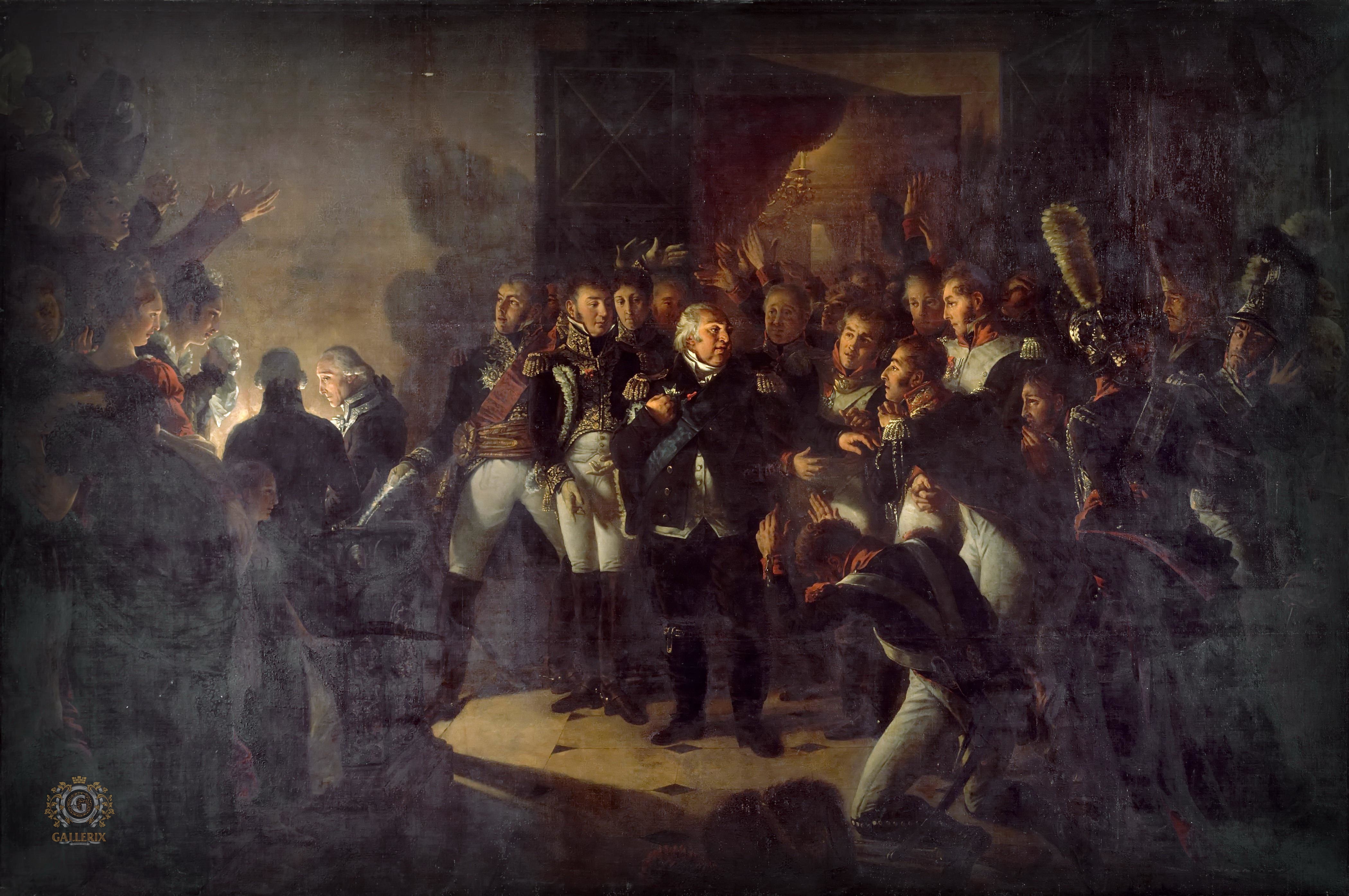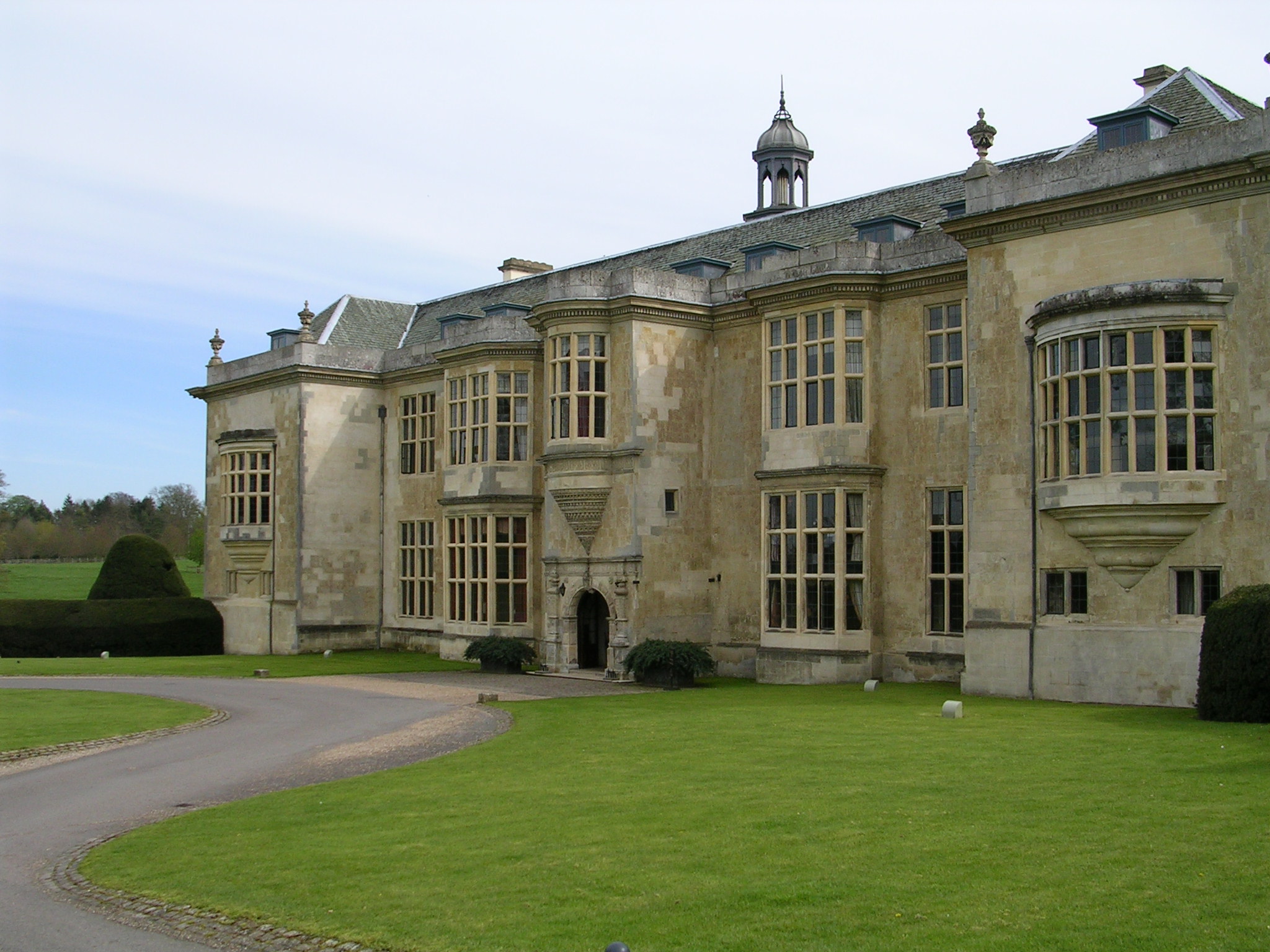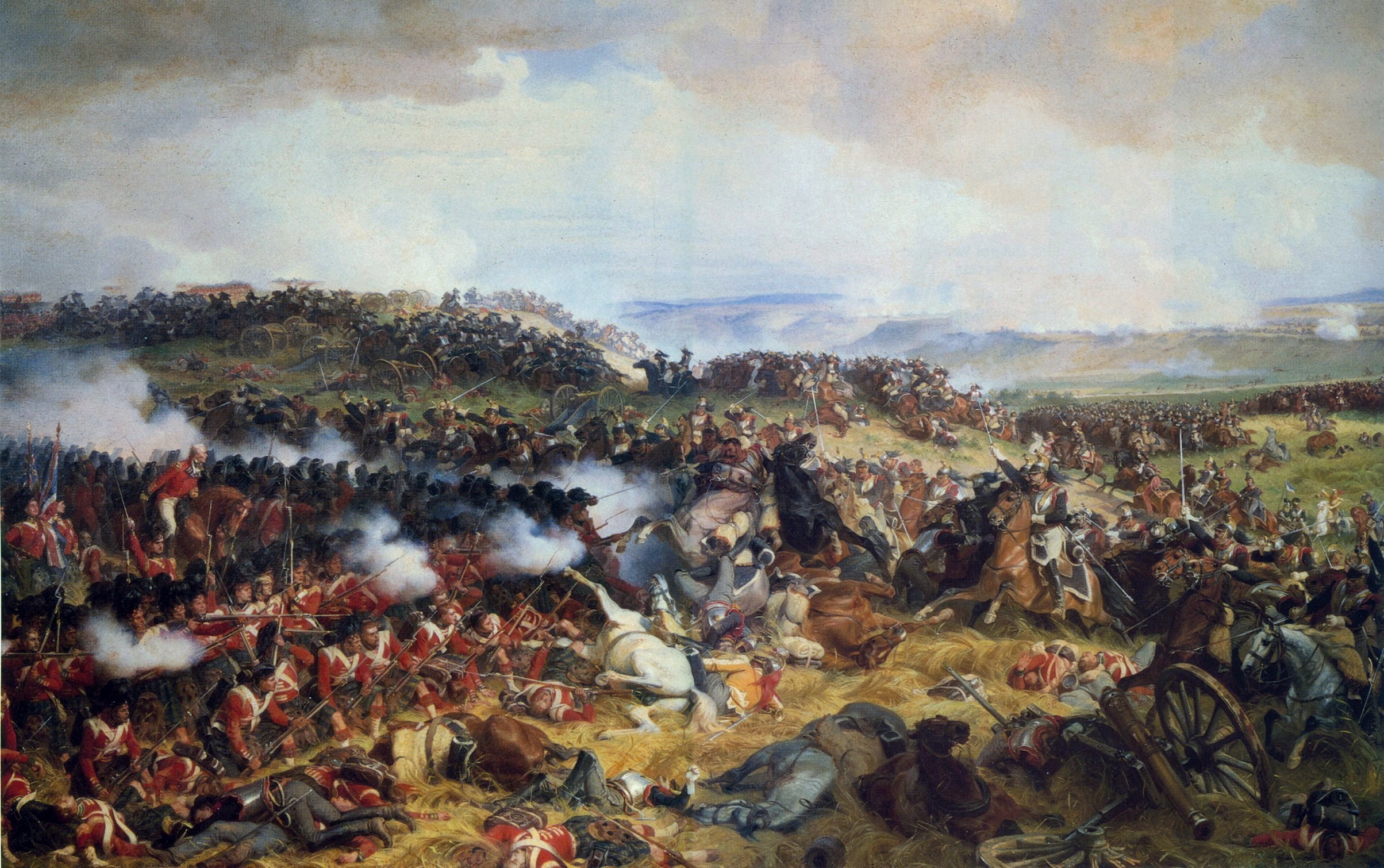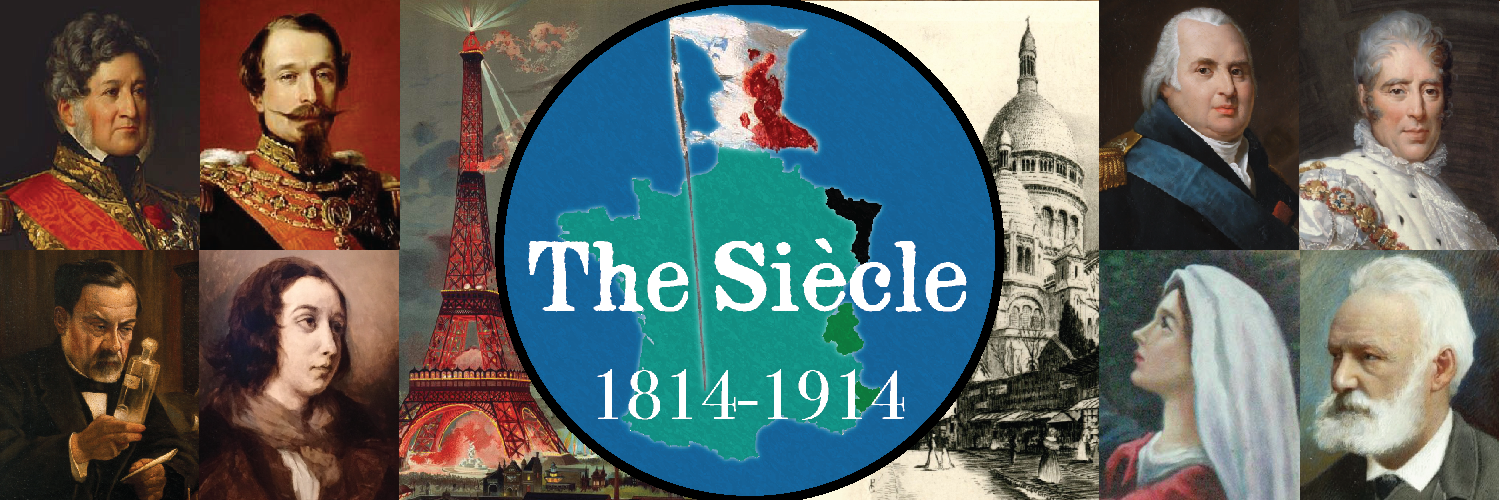Episode 2: The Hundred Days
This is The Siècle, Episode 2: The Hundred Days.
It’s hard for a leader to go into exile with dignity. In 1814, Napoleon left for exile on Elba in a train of 14 carriages with a cavalry escort — then saw his longtime valet steal 5,000 francs and run off, had rocks thrown through his carriage window by unruly crowds, and then spent an afternoon vomiting after eating bad fish while waiting for the ship to take him to his forced retirement.1
But even by the low bar of exiles, King Louis XVIII’s flight from Paris to Belgium in 1815 after Napoleon’s return to power was particularly dismal. Historian Philip Mansel calls it “a nightmare of confusion, treachery and cowardice.”2 For one thing, it rained constantly over the entire trip. The writer Alfred de Vigny, who was there, wrote that the mud became too deep for his horse to struggle through, obliging him to dismount and walk. De Vigny recalled: “My greatboots were covered outside with a thick crust of mud as yellow as ochre, and inside they were full of water.” He had not taken them off in four nights.3
The king had hemmed and hawed until after midnight before deciding to flee Paris less than a day ahead of Napoleon. Louis raced ahead with a small entourage to the mouth of the Somme River — “conveniently placed for a dash to England.” Louis brought with him four million francs in government money, while one of his valets was sent on a different route with another four million francs in gold and France’s crown jewels.4

“Departure of Louis XVIII from the Palace of the Tuileries on the Night of 20 March 1815” by Antoine-Jean Gros (1771-1835). Public domain via WikiArt.
Meanwhile Louis’s bodyguard was bogged down 50 miles back. “We could not proceed fast,” de Vigny noted. “The mud became thicker and deeper. Nothing upon the route, and nothing at the end of it.”5 Increasingly, the bodyguard disintegrated. Louis’s personal guard was 6,000 strong when Napoleon landed in France on March 1. By March 26 there were just 450 men left. Some were separated by conditions, including de Vigny, who fell behind when his horse lost a shoe, but many more simply deserted what seemed a losing cause. The French people, too, were pragmatic — de Vigny observed the residents of one town, even before Louis’s soldiers had left, taking down their white Bourbon flags and sewing together tricolor flags.6
Louis had a decision to make: where should he flee? One option was to flee to a royalist-friendly area of the countryside, such as the Vendée in the west, or Bordeaux in the southwest, and try to rally a resistance. But several attempts by Louis’s loyalists to do just that failed, and the passive reaction of French towns to Napoleon’s advance suggested that the French people had little appetite for a civil war even if Louis had.
The alternative to civil war, though, was fleeing the country. Before his restoration, Louis had spent a happy five years in exile in England, at a country estate called Hartwell House. Five days after Louis fled Paris, one of his few remaining retainers wrote that “the King’s resignation takes him straight back to Hartwell” — which Mansel calls “a sad, dry and revealing phrase, which shows that Louis had almost lost hope.”7

Hartwell House, Buckinghamshire, where Louis XVIII stayed from 1809 to 1814 and nearly returned a year later. By Giano at English Wikipedia. Public domain, via Wikimedia Commons.
Almost, perhaps, but not quite. Louis remained confident that a significant portion of the French people still supported him, even if the army did not. He would not flee into English obscurity — though he did decide his best move was to find temporary refuge in another country.8
Louis was, Mansel writes, “much less keen to take risks than any of his entourage,” especially since his guards had disappeared. Staying in France, where the army seemed loyal to Napoleon, was too risky for the ever-cautious king. “Louis insisted on putting a frontier between himself and the rebellious army,” Mansel writes.9
His relatives and allies felt this was a terrible mistake. No French king had ever fled his own country before. The king’s cousin Louis-Philippe and senior generals all felt that “for the king to step on to foreign soil, perhaps to return with foreign troops, would be fatal to the monarchy.”
“The frontier,” warned Louis-Philippe, “is a Rubicon which, once crossed, is not so easily re-crossed.”10
Louis crossed his Rubicon into Belgium, and settled down in the city of Ghent on March 30.
Back in Paris
Napoleon entered Paris on the evening of March 20 to cheers from his supporters, and immediately got to work. By the time he went to bed at 3 a.m. — just over 24 hours after Louis fled — he had assembled a cabinet of ministers to oversee all important areas of the state.11 This didn’t necessarily take too much effort on Napoleon’s part — even before he arrived, Mansel writes, “Napoleon’s former ministers, councillors of state… and valets began to arrive at the Tuileries [Palace], wearing the Napoleonic liveries and uniforms which they had kept.” One observer, Alexandre de Laborde, wrote: “Calmly and quietly they resumed their duties as if Bonaparte had made only a short journey.”12
But everything was not as it was the last time Napoleon had sat on the throne. Then, he had been an autocrat capable of governing by decree. Now he was trying to replace a constitutional monarchy, and he recognized that he had to change with the times, too. Even the loyalists who came over to Napoleon’s side during his march on Paris frequently took the opportunity to harangue him about the need for political reform. When Bonapartists in Grenoble released an address welcoming the emperor to their city, they also urged him to “renounce world empire” and to show mercy. “Your majesty will give the French people protective and liberal laws,” they declared.13
Napoleon got the message. He asked the liberal writer Benjamin Constant to write a new constitution. The resulting document abolished censorship and established a bicameral legislature modeled on Britain’s parliament that legally shared power with the emperor. (It was, in fact, extremely similar to the Charter that Louis had issued the year before.) Meanwhile, Napoleon promised that he was done conquering. He wrote a public declaration that “from now on it will be more pleasant to know no other rivalry than that of the benefits of peace.” Meanwhile, he abolished France’s unpopular excise taxes on wine, tobacco and salt — taxes Napoleon had collected before his downfall, and which the Bourbons had promised to end before Louis backtracked and kept them for their revenue.14
Was Napoleon sincere in his protestations of peace and reform? The other nations of Europe certainly didn’t believe them. Britain, Austria, Prussia and Russia had been meeting at the Congress of Vienna during this entire time to try to sort out a post-Napoleonic peace. On March 13, while Napoleon was still en route to Paris, they issued a declaration calling Napoleon an outlaw and promising to “employ all their means… against every attempt which shall threaten to re-plunge the world into the disorders and miseries of revolutions.”
“Congress of Vienna.” After Jean-Baptiste Isabey CC BY-SA 3.0, via Wikimedia Commons. See list of personages in this drawing here.
Napoleon’s biographer Andrew Roberts notes that Napoleon might have been forced to change his ways whether he wanted to or not. “Such was the exhausted state of France in 1815, with most of the population wanting peace, that if he had remained in power Napoleon might very well have returned to the kind of pacific government of national unity that he had operated” before crowning himself emperor in 1804.15 But if Napoleon wanted to have a chance to show his true colors, he was going to have to fight for it.
Intrigues
The other powers of Europe were resolved not to let Napoleon rule France. But they were not so certain that Louis XVIII should, either. After all, hadn’t Louis shown himself not up to the task through his bumbling first year on the throne? Louis himself was aware of this, saying before his flight that: “…if I was unfortunately forced leave France, I’m not really sure what would become of us, because it won’t be like the last time. Then, they thought it wasn’t our fault. But now, I fear it will be very different, and they will say to us, ‘You went back, and you weren’t able to cope.’”16
If neither Louis nor Napoleon were acceptable, then who? That brings us back to Louis’s cousin, who we’ve met several times already in this podcast: Louis-Philippe, the duc d’Orléans, or Duke of Orleans. (The name “Louis-Philippe” is hyphenated and always refers to the duc d’Orléans. If I refer simply to “Louis” in this podcast, I mean Louis XVIII.) Louis-Philippe was a descendant of Louis XIV. His father, despite his high rank, had been an enthusiastic proponent of the Revolution who had changed his name to “Philippe Égalité,” or Philip Equality, and voted for the death of Louis XVI as a member of the National Convention. Louis-Philippe had fought as a general in the revolutionary armies before fleeing the country as the Revolution became more radical.

Louis-Philippe, duc d’Orléans, during the Restoration. By J.M.N. Frémy (engraver), after a miniature by Augustin (painter). Public domain, via Wikimedia Commons.
All this had earned Louis-Philippe a good reputation in liberal circles, even if some members of Louis XVIII’s family still held a grudge against him for his father’s regicide. As one Napoleonic officer said of Louis-Philippe: “His fine conduct in the army during our first [revolutionary] campaigns, his behavior during the emigration, his constant refusals to fight in the ranks of our enemies, all made him an object of our veneration.”17 Because of his liberal reputation, Louis-Philippe wasn’t tarred with the fears that he wanted to undo the Revolution in the same way his cousins had been.18
The Duke of Wellington, in an April 11 letter, observed that Louis-Philippe “is the only acceptable middle ground between Bonaparte, the army, and the Jacobins on one hand, and the King and violent émigrés on the other.”19 There are credible, if unproven, reports of an attempted coup in 1815 to depose Louis in favor of his cousin, possibly involving Napoleon’s treacherous former minister of police, Joseph Fouché. The Tsar of Russia openly argued for installing Louis-Philippe as king.20 Through all of this, Louis-Philippe stayed cagey: remaining outwardly loyal to his cousin while also keeping his distance.
Waterloo
“The Battle of Waterloo,” by William Sadler (1782-1839). Public domain, via Wikimedia Commons.
Questions of the throne were still undecided when Napoleon’s return escalated into armed conflict. Even as the returned emperor ordered various public works projects and arranged for a rigged referendum to approve Constant’s new constitution, he was expanding the draft and rearranging the army. The other countries in Europe were already moving against Napoleon, and on May 15 they made it official by declaring war.21
All this set the stage for one of the most dramatic battles in history: Waterloo. With English, Russian, Austrian and Prussian armies all converging on France, Napoleon had a choice to make: stay on the defensive, or strike out aggressively. Unsurprisingly, Napoleon chose the latter: a bold strike north to try to defeat the Prussians and British in Belgium before their allies could arrive. As Roberts writes, “to fight was a risk, but not so great a risk as waiting until the vast Austrian and Russian armies were ready to strike at Paris once again.”22

“Strategic Situation of Western Europe, 1815,” by the Department of History, United States Military Academy. Public domain, via Wikimedia Commons.
Things started well for Napoleon, as he outmaneuvered Wellington and defeated the Prussians at the Battle of Ligny — though miscommunication among his commanders prevented Napoleon’s victory from being total. He then wasted precious time before sending a chunk of his army after the retreating Prussians. All this gave the Duke of Wellington, the British commander in Belgium, time to entrench his army in solid positions south of the village of Waterloo before the clash on June 18.
Despite all these mistakes, Waterloo was, in Wellington’s famous phrase, “the nearest run thing you ever saw in your life.” Around 72,000 French troops faced off against around 68,000 Coalition soldiers under Wellington, many of them inexperienced. But Wellington was dug in, and the retreating Prussian army was nearby, able to come to Wellington’s aid if given enough time.
Waterloo Campaign, by Ipankonin. GFDL, CC-BY-SA-3.0 or CC BY-SA 2.5, via Wikimedia Commons.
The battle began with a French advance on a fortified farmhouse, which held out. French artillery had limited impact because Wellington had deployed the bulk of his army behind the crest of a ridge. An infantry attack in the early afternoon was repulsed. As the Prussian army began to appear on Napoleon’s flank, the French launched a series of massive cavalry charges, perhaps by accident. These, too, were repulsed as the Coalition forces assumed defensive square-shaped formations. When the French finally seized a position in early evening, Napoleon hesitated before committing his reserves to exploit the breakthrough.

“Marshall Ney and his staff leading the cavalry charge at Waterloo,” by Louis Dumoulin (1860-1924). Public domain, via Wikimedia Commons.

“The Battle of Waterloo: The British Squares Receiving the Charge of the French Cuirassiers,” by Henri Félix Emmanuel Philippoteaux (1815–1884). Public domain, via Wikimedia Commons.
As Roberts writes, “The mystery of the battle of Waterloo is why a collection of fine and experienced French combat generals… repeatedly failed to co-ordinate their efforts, as they had done successfully on so many previous battlefields.”23
Still, the Coalition army was extremely hard-pressed, and had things stayed the same, the French might have won despite their mistakes. Unfortunately for Napoleon, in late afternoon, the Prussian army began to arrive, attacking his flank. The French needed to break Wellington’s lines immediately or risk being caught in a pincer in between two armies.
The final act came around 7 p.m., when Napoleon sent his Imperial Guard in a march directly at the Coalition’s lines. But this cream of the French army encountered a flurry of musket and cannon fire and retreated. The sight of the supposedly invincible Guard retreating caused the remainder of the French army to break and run. Napoleon had lost as many as 31,000 men killed or wounded, while the Allies lost around 24,000 — the second-bloodiest battle of the age.24

“The morning after the battle of Waterloo” (1816), by John Heaviside Clark (c.1771–1836). Public domain, via Wikimedia Commons.
Aftermath
The Coalition victory at Waterloo spelled the end. Even before Wellington’s victory, Louis’s position had grown stronger after his ignominious retreat. Throughout the month of April, a range of royalists who had fled for their lives before Napoleon’s advance gradually coalesced around Louis’s court in exile, once it became clear he was “the monarch most likely to succeed.”25 Despite the Tsar’s support, Louis-Philippe’s candidacy never took off. His support in the army meant less now that the army was shattered and discredited, and soon to be disbanded altogether. The victorious Allies gradually settled on legitimacy as the best principle to govern France — which meant Louis, not Louis-Philippe. Wellington, whose support for Louis was important, allegedly said Louis-Philippe “would simply be a usurper of a good family.”26

Sir Arthur Wellesley, 1st Duke of Wellington (c. 1815-16). By Thomas Lawrence (1769-1830). Public domain, via Wikimedia Commons.
Meanwhile, Louis had done his cause a great deal of good by simply not giving up. Despite being the first French monarch to flee his country, Louis never renounced his claim to the throne. The politician and writer Chateaubriand wrote that “Louis XVIII’s unshakeable faith in his own rank is the real force which gave him back the throne … The exile without soldiers benefitted from all the battles he did not fight. Louis XVIII was legitimacy incarnate.” Mansel puts it another way, observing that if Louis had acted like Napoleon or several future French monarchs by abdicating upon suffering a grievous setback, “then his exile would have been as ignominious as theirs. But… Louis was not the abdicating sort of monarch.”27
Another factor was that Louis retained considerable popularity in France. Not only nobility and conservative peasants backed the Bourbons in 1815, but also many urban workers and educated elites. Napoleon’s referendum to approve his new constitution drew support from just 21 percent of the electorate, with most eligible electors abstaining. While some areas of France were strongly Bonapartist during the Hundred Days, others remained royalist. While acknowledging that precise figures are impossible, Mansel estimates that “perhaps each monarch had the support of about half of France.” 28
So Louis returned home to Paris — though, embarrassingly, he returned “in the baggage train of the foreigners,” as an accessory to Wellington’s army. The British general used Louis to overcome the resistance of French fortresses that refused to surrender to foreigners — but agreed to open their gates to the king. This decision was perhaps justified by Louis’s belief that Napoleon, and not the foreign armies, were the true enemies of France, though it may also have been about a desire to get back to Paris as soon as possible, before Louis-Philippe could have a chance to build support in the capital.29 Regardless, it worked, at least in the short term, but it caused lasting damage to Louis’s reputation in France.
Napoleon also raced back to Paris ahead of his retreating army to try to salvage the situation, but found that his “prestige” had been badly damaged by his defeat and flight. He had little support among France’s political elite.30 As an alternative, he could have tried to rally popular support, but Napoleon — a lifelong believer in civic order — refused to be “king of the mob.”31 The Emperor abdicated on June 22, 1815, just over 100 days since he had returned to Paris from Elba. (Technically it was 111 days, but history has opted for a more poetic rounding as the Hundred Days.) With support from the foreign powers, Louis re-entered Paris on July 8 to cheering crowds. He was back on his throne. But with Allied armies spreading out to occupy France and impose a harsh peace, and Ultra-Royalists thirsting more than ever for revenge, Louis’s second go as king would not prove easy.
That story will have to wait a few more weeks, however. Before we resume our narrative, I’m going to take a few episodes to introduce France at the beginning of the Restoration. In two weeks’ time I’ll take you on a tour of France in 1815, and the key points of culture and geography that will be shaping our narrative for the entire century.
And yes, that’s it. We’ve dispensed with Waterloo, one of the most famous battles in history, in just a few minutes. The Hundred Days, nearly as famous, got little more. This is quite deliberate, I’m afraid. Waterloo is the climax of 25 years of history — but those 25 years are not the story of The Siècle. Waterloo is incredibly important, but it is a prelude, not a finale, to the story we’ll be exploring in future episodes.
In the meantime, if you’d like to learn more, be sure to visit The Siècle online. At thesiecle.com/episode2 you can read an annotated transcript of this episode with pictures and maps. That’s t-h-e-s-i-e-c-l-e dot com slash episode2, with 2 as a number rather than a word. Also on that website you can find out how you can support this podcast through Patreon and buying me books to research future episodes. If you’ve enjoyed this podcast so far, please spread the word about The Siècle on social media, where it’s @thesiecle on both Facebook and Twitter.
Thanks for listening. Don’t forget to tune in in two weeks for The Siècle, Episode 3: The Kingdom of Louis Dix-Huit.
-
Andrew Roberts, Napoleon: A Life (New York: Viking Penguin, 2014), 717, 721. ↩
-
Philip Mansel, Louis XVIII, Rev. ed. (Phoenix Mill: Sutton, 1999), 227. ↩
-
Alfred de Vigny, Servitude et grandeur militaires [Recollections of Military Servitude], in Lights and Shades of Military Life, edited by Charles James Napier, translated by Frederic Shoberl (London: H. Colburn, 1840), 31. ↩
-
Mansel, Louis XVIII, 226-7. “The king and the princes left in the night. H.M. the Emperor arrived this evening at eight o’clock in his palace of the Tuileries at the head of the same troops which had been sent to block his route this morning,” wrote the Moniteur, the official government newspaper. ↩
-
De Vigny, Servitude et grandeur militaires, 76-7. ↩
-
De Vigny, Servitude et grandeur militaires 31, 79. Mansel, Louis XVIII, 224, 228. ↩
-
Mansel, Louis XVIII, 228-9. ↩
-
Mansel, Louis XVIII, 229, 232. ↩
-
Mansel, Louis XVIII, 229. ↩
-
Munro Price, The Perilous Crown: France between Revolutions (London: Macmillan, 2007), 79-80. ↩
-
Roberts, Napoleon: A Life, 740. ↩
-
Philip Mansel, Paris Between Empires: Monarchy and Revolution, 1814-1852 (New York: St. Martin’s Press, 2001), 74. ↩
-
Paul Britten Austin, 1815: The Return of Napoleon (Barnsley: Frontline Books, 2002), 150, 157. ↩
-
Roberts, Napoleon: A Life, 745-6. ↩
-
Roberts, Napoleon: A Life, 746. ↩
-
Price, The Perilous Crown, 81. ↩
-
Austin, 1815: The Return of Napoleon, 55. ↩
-
Price, The Perilous Crown,76. ↩
-
Arthur Wellesley, Supplementary Dispatches, Correspondence, and Memoranda of Field Marshall Arthur Duke of Wellington, K.G., edited by Arthur Richard Wellesley, vol. 10 (London: John Murray, Albemarle Street, 1863), 61. ↩
-
Price, The Perilous Crown, 81. ↩
-
Roberts, Napoleon: A Life, 747-8. ↩
-
Roberts, Napoleon: A Life, 750-1. ↩
-
Roberts, Napoleon: A Life, 766. In a footnote, he observes that when Waterloo is re-fought by modern wargamers who don’t repeat Napoleon’s mistakes, the French usually win. ↩
-
Roberts, Napoleon: A Life, 768. ↩
-
Mansel, Louis XVIII, 242. ↩
-
Price, The Perilous Crown, 83. ↩
-
Mansel, Louis XVIII, 244. ↩
-
Mansel, Louis XVIII, 233-6. ↩
-
Mansel, Louis XVIII, 247-52. ↩
-
Mansel, Paris Between Empires, 81. ↩
-
Guillaume de Bertier de Sauvigny, The Bourbon Restoration., translated by Lynn M. Case (Philadelphia: The University of Pennsylvania Press, 1966), 106. ↩
